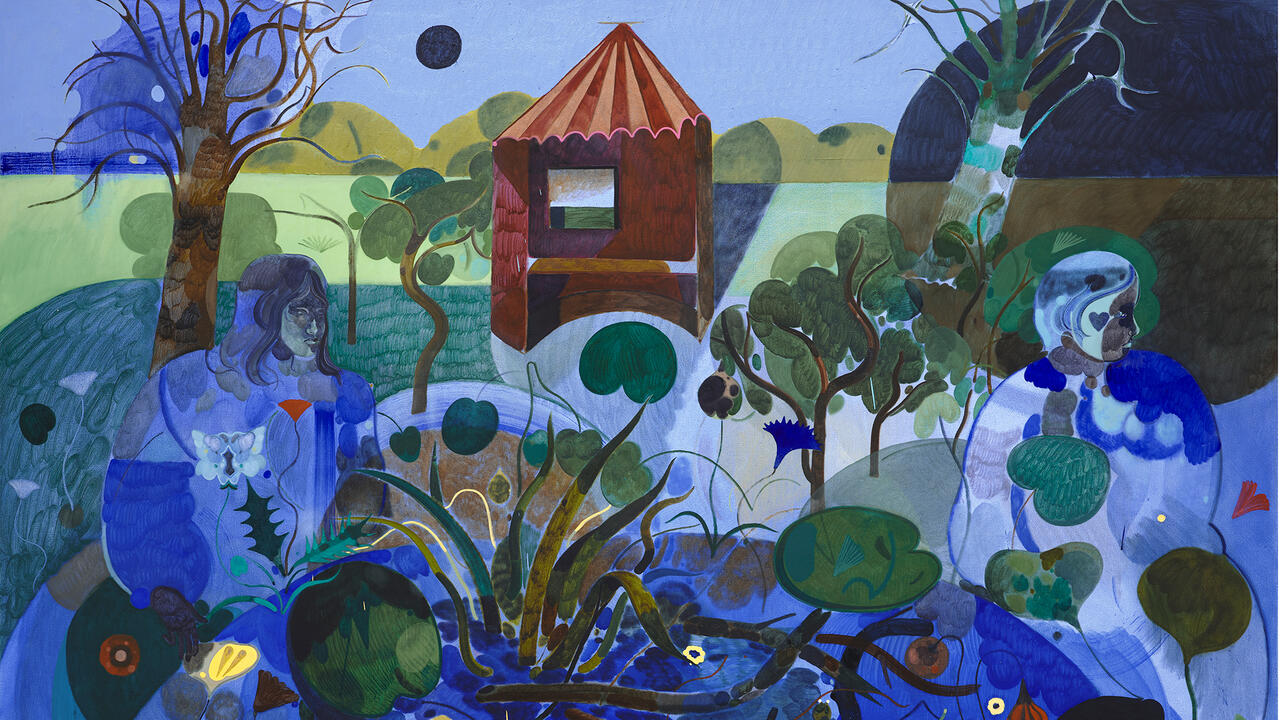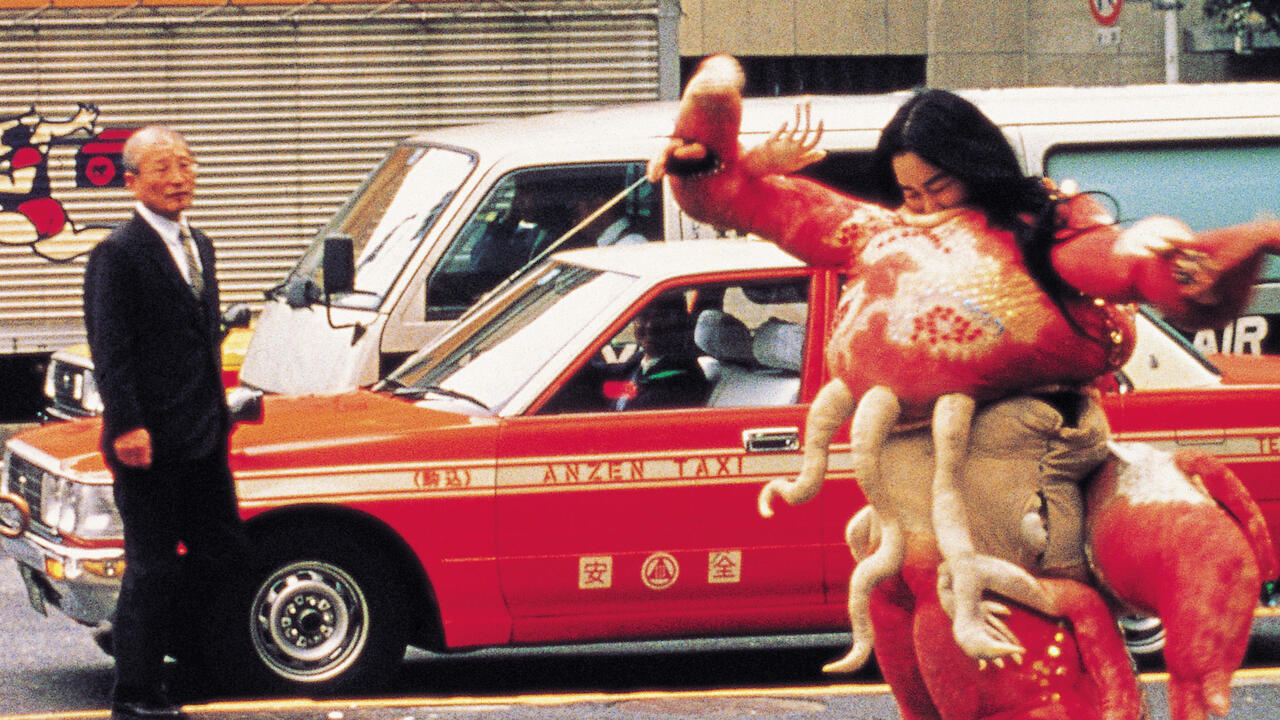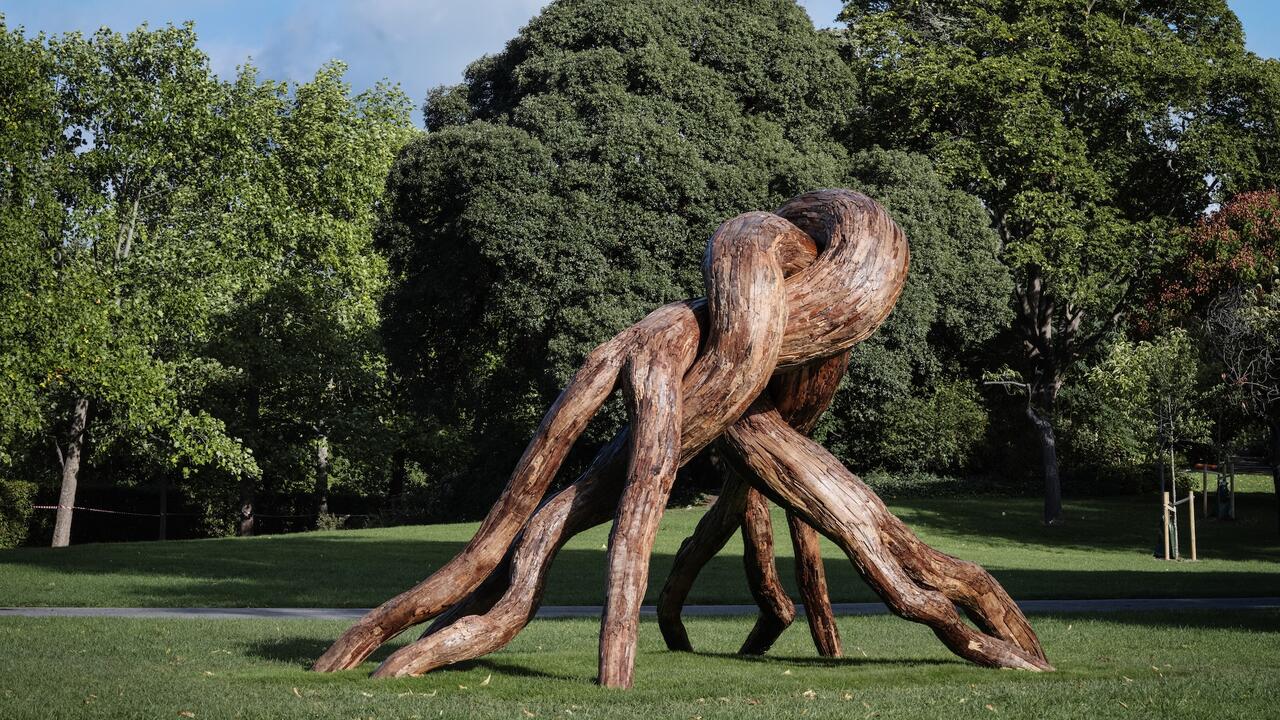In Lieu of Unity / En Lugar de la Unidad
Ballroom Marfa, USA
Ballroom Marfa, USA

Mario Garcia Torres’ video An Open Letter to Dr. Atl (2005), which discusses the proposal to build a Guggenheim museum near Guadalajara, Mexico, is a biting critique of what might be termed the destination art industry. ‘Art is closely related to tourism,’ observes a deadpan voice-over that accompanies panning shots of the proposed site: ‘People travel long distances to see art.’ Marfa is precisely the kind of high-art tourist destination described in Torres’ video; in this particular context, the work cut uncomfortably and deliberately close to the bone. Marfa is unique in the American cultural landscape – the collision of desert landscape, high art and border politics is striking. The Border Center is located next door to the Dan Flavin and Donald Judd installations at the Chinati Foundation, and Marfa (the location for films ranging from Giant, 1956, to There Will Be Blood, 2007) is crawling with Border Patrol trucks.
The fracturing between the different populations of this small west Texas town is one of Marfa’s salient characteristics. It was also the impetus behind ‘In Lieu of Unity / En Lugar de la Unidad’, which took a sober look at division (geographical, economic and social) and questioned the degree to which the politics of art production are adequately addressing the reality of geopolitics today. As indicated by the title, the exhibition engaged with two ongoing dialogues: the contentious role of the border (with its literal and metaphorical divisions) and the Utopian idealism that underscores much of what is categorized as relational aesthetics.
‘In Lieu of Unity …’ featured ten Mexican artists responding to the idea of the border specifically through the prism of social groups and relations. While so much of what passes as relational aesthetics peddles a message of productive social exchange, the works shown here reject the idea of social cohesion. The border functions not only as a boundary, but as a gap through which meaning on the level of culture, metaphor and language falls. In Eduardo Abaroa’s Eighty Prepositions in English and Their Spanish Equivalents (2010), installed in the gallery’s courtyard, found objects were attached haphazardly to a wire fence, representing prepositions such as ‘beyond’ (a satellite dish) or ‘abroad’ (an LP of Vincent Bell’s Airport Love Theme, 1970). The English and Spanish words accompany each object. Abaroa locates his work in the abstract gap between two languages; this gap is one of the many unclaimed spaces operating around the border.
Minerva Cuevas’ Crossing of the Rio Bravo (2010) similarly articulates the materiality of the border as a location and its curious status as a non-space. The work presents historical maps and documents, which draw the border as a neat and distinct line, but on the ground it’s as amorphous as the river that demarcates it. Using white paint to inscribe a hopeful ‘SU-US-US’ (‘Your-Us-US’) on rocks in the Rio Grande (known as the Rio Bravo in Mexico), Cuevas draws attention to the material reality that border ideology inhabits.
This focus on materiality and demarcation was repeated in Teresa Margolles’ chilling Irrigación (Irrigation, 2010), a performance and video featuring a truck sprinkling water along Highway 90 between Marfa and the neighbouring city of Alpine. Cloths placed on murder sites in Juárez (just across the border from El Paso, the city into which most visitors to Marfa fly, and the site of more than 500 murders in the first months of this year) were immersed into the water in the truck. Irrigación is clearly an act of contamination – the seeping of violence back and forth across the border. The border’s fixity is the thing against which these artists protest, and they largely do this by demonstrating its absolute porousness.
That the border can be both these things and many more is in keeping with an underlying sense of alchemy that was at work in ‘In Lieu of Unity…’. Pedro Reyes’ Palas por pistolas (Pistols into Spades, 2008–ongoing), for instance, comprises ‘1,527 weapons destroyed and made into 1,527 shovels to plant 1,527 trees’, whilst Margarita Cabrera’s Space In Between (2010) uses border patrol uniforms in order to create a landscape of potted cacti sculptures.
Paulina Lasa’s Untitled (2010) also uses humble materials, but the product and message of the transformation is more ambiguous. At the opening of ‘In Lieu of Unity …’, and at venues across Marfa, Lasa gave visitors rings tied with pieces of yarn. As the visitors mingled, the yarns became increasingly tangled. In the end, the product of all that social interaction was a staged work of art. But it was also a hopeless tangle, fragile and incoherent – a direct rebuttal to the ideal of unity.
























